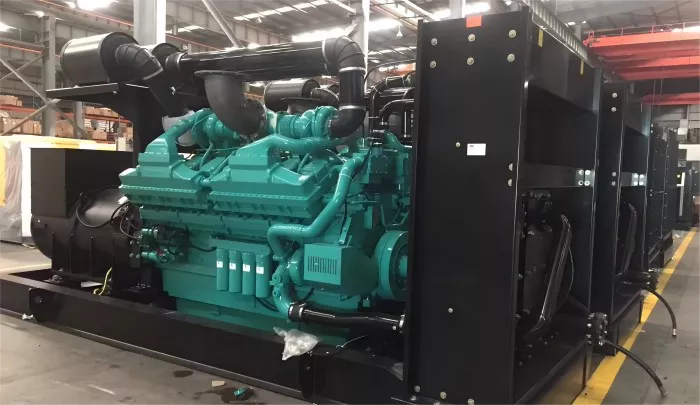Building a diesel generator from scratch is a complex and intricate task that requires a thorough understanding of mechanical, electrical, and engineering principles. This guide provides a detailed overview of the steps involved in creating a diesel generator, from conceptual design to assembly. Whether you are a DIY enthusiast or a professional engineer, this guide will help you understand the key components and processes needed to construct a functional diesel generator.
1. Understanding Diesel Generators
1.1 What is a Diesel Generator?
A diesel generator is a device that converts diesel fuel into electrical energy. It consists of a diesel engine coupled with an alternator (or generator) to produce electrical power. Diesel generators are widely used for backup power, emergency situations, and in locations where a reliable power source is needed.
1.2 Key Components
Diesel Engine: Burns diesel fuel to generate mechanical energy.
Alternator: Converts mechanical energy into electrical energy.
Fuel System: Includes the fuel tank, pump, and filters.
Cooling System: Maintains optimal engine temperature.
Control Panel: Monitors and controls the generator’s performance.
2. Planning and Design
2.1 Define Requirements
Power Output: Determine the required power output based on the intended application. This will guide the selection of the engine and alternator size.
Operating Environment: Consider the environmental conditions where the generator will be used, including temperature, humidity, and altitude.
Space and Dimensions: Plan the size and layout of the generator, ensuring it fits within the available space and meets safety regulations.
2.2 Create a Design
Technical Specifications: Develop detailed technical specifications for each component, including engine power rating, alternator capacity, and cooling system requirements.
Blueprints and Schematics: Create blueprints and electrical schematics that outline the assembly and wiring of the generator.
3. Component Selection
3.1 Diesel Engine
Engine Type: Choose a diesel engine that meets the power output and efficiency requirements. Consider factors such as fuel consumption, emissions, and durability.
Engine Specifications: Select an engine with the appropriate horsepower and torque to match the generator’s requirements.
3.2 Alternator
Capacity: Choose an alternator with a power rating that matches or exceeds the engine’s output.
Type: Decide between synchronous and asynchronous alternators based on the application’s needs and budget.
3.3 Fuel System
Fuel Tank: Select a fuel tank with adequate capacity and material durability.
Fuel Pump and Filters: Choose a pump and filters that are compatible with the engine and ensure reliable fuel delivery.
3.4 Cooling System
Radiator: Select a radiator that can effectively dissipate heat from the engine.
Cooling Fans and Hoses: Choose fans and hoses that support the cooling system’s efficiency.
3.5 Control Panel
Monitoring and Controls: Choose a control panel that allows monitoring of engine performance, voltage, and frequency. Ensure it includes features for safety and automatic shutdown.
4. Assembly Process
4.1 Engine and Alternator Integration
Mounting: Securely mount the diesel engine and alternator on a common base. Ensure proper alignment and coupling to avoid mechanical issues.
Connection: Connect the engine’s output shaft to the alternator input. Use appropriate couplings and alignment tools.
4.2 Fuel System Installation
Tank Placement: Position the fuel tank in a secure location, ensuring proper ventilation and accessibility.
Piping and Connections: Install fuel lines between the tank, pump, and engine. Use high-quality materials and ensure leak-proof connections.
4.3 Cooling System Installation
Radiator Mounting: Mount the radiator in a position where it can effectively dissipate heat.
Cooling Hoses: Connect the hoses between the engine and radiator, ensuring proper routing and secure fittings.
4.4 Electrical Wiring
Power Connections: Connect the alternator’s output to the control panel and load terminals. Ensure proper insulation and protection of wires.
Control Panel: Wire the control panel to the engine and alternator, including connections for monitoring and safety features.
4.5 Testing and Calibration
Initial Testing: Conduct initial tests to verify that all components are functioning correctly. Check for leaks, proper alignment, and electrical connections.
Calibration: Adjust settings on the control panel and engine to ensure accurate performance and output.
see also: Propane VS Diesel Generator: Which Is Better?
5. Safety Considerations
5.1 Safety Protocols
Protective Gear: Wear appropriate personal protective equipment (PPE) during assembly and testing.
Safety Procedures: Follow standard safety procedures for handling diesel fuel, electrical components, and heavy machinery.
5.2 Emergency Measures
Emergency Shutdown: Implement emergency shutdown procedures in case of malfunction or safety issues.
Fire Safety: Ensure that fire safety measures are in place, including extinguishers and proper ventilation.
6. Maintenance and Operation
6.1 Routine Maintenance
Regular Checks: Perform regular checks on fuel levels, oil levels, and cooling systems. Replace filters and fluids as needed.
Inspection: Conduct periodic inspections of mechanical and electrical components to ensure reliable operation.
6.2 Operational Best Practices
Startup and Shutdown: Follow recommended procedures for starting up and shutting down the generator. Allow the engine to warm up before full load operation.
Load Management: Avoid overloading the generator and ensure that it operates within its specified capacity.
Conclusion
Building a diesel generator involves careful planning, component selection, and precise assembly. By understanding the key components and following the outlined steps, you can create a reliable and efficient diesel generator tailored to your specific needs. Adhering to safety protocols, performing regular maintenance, and operating the generator according to best practices will ensure its longevity and performance.
Related topics:
- Why Diesel Generators are So Expensive?
- How Much Diesel Is Needed to Run a Generator?
- Diesel VS Petrol Generators: Which is Better for Your Needs?

